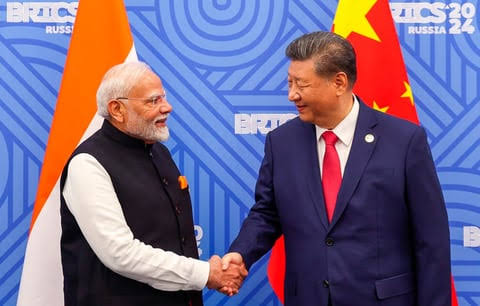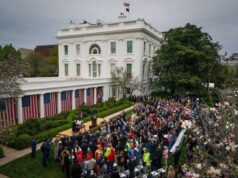Strategic patience crucial to guide China-India relations

After over four years of LAC tensions, last week, India and China reached resolutions on issues concerning the LAC area.
This coincided with Prime Minister Narendra Modi and Chinese President Xi Jinping’s meeting on the side-lines of the 16th BRICS Summit.
This has since started the process of their military disengagement, which will be followed by de-escalation and a return to their time-tested approach of ensuring peace and tranquillity along the LAC/ Indo Tibetan Border.
As underscored by both leaders, this was their first formal meeting in the last five years. And, as a major achievement of this meeting, the two leaders agreed for an early meeting of their Special Representatives – the highest-level border talks mechanism set up in 2003 that held its last meeting in December 2019 in New Delhi – to oversee this process of disengagement and the resolution of the disputed Indo Tibetan border.
How have Indo Tibetan border tensions coexisted with China-India rising trade and regular interactions? Apart from 31 meetings of their Working Mechanism for Consultation and Coordination on LAC Affairs and 22 rounds of Meeting of the Special Representatives of India and China – that met at far more frequency since their Galwan crisis of June 2020 – how did the flow of people, especially from India to China, remain normal? No doubt, this period saw bilateral trade becoming more one-sided.
Obtaining a visa for Chinese nationals saw layers of scrutiny added. Also, investments from China require additional vetting and security clearances, yet the two countries’ foreign ministers continued to meet at multilateral forums.
They met twice in July this year: first at Astana meeting of Shanghai Cooperation Organisation and then in the Vientiane meeting of Association of Southeast Asian Nations.
India’s National Security Advisor Ajit Doval met Chinese Foreign Minister Wang Yi last month during the Meeting of BRICS and BRICS Plus High-Level Security Officials in St Petersburg.
Modi and Xi also spoke briefly during the November 2022 Bali G20 summit and held informal talks at the Johannesburg BRICS summit last year.
A recent change in mood is traced to Prime Minister Modi’s interview in the April issue of Newsweek magazine where he underscored that “abnormality in our bilateral interactions can be put behind us,” saying that stable and peaceful relations between India and China are important for not just India and China but the entire region and the world.
Also, this was not the first time that China-India prolonged negotiations finally delivered results.
Their Indo Tibetan border negotiations go back to the early 1980s and have sustained “peace and tranquility” on the Line of Actual Control.
In their 2017 tensions at Doklam, which saw eyeball-to-eyeball military deployments for 73 days, a disengagement agreement was achieved on August 28, just in time for the Xiamen BRICS Summit of September 3 to 5, 2017.
This episode did not impact China-India bilateral interactions either. Prime Minister Modi had visited China five times during his first term of 2014-19 and had hosted President Xi twice in 2014 and 2019.
It is important to understand how their civilizational paradigm of “strategic patience” makes such countercurrents coexist and ensure stability in China-India relations.
No doubt all civilizations underscore the value of patience. But this is largely defined as waiting-in-silence, expecting that time will heal everything.
Indian and Chinese civilizations have conceptualized the meaning of “patience” into an art and science of using “time of waiting,” to learn, adopt and innovate strategies to produce enduring solutions for all stakeholders.
Indian and Chinese interpretations of patience see even “non-solution” as a working solution that facilitates peaceful-coexistence. Contrast this with the Ukraine crisis where the US has raised a coalition of 50 nations to support Ukraine’s war efforts, making peace talks impossible.
The answer to such pragmatic behavior of India and China lies in their civilizational narratives, which expound on “time” in a cyclical mode.
The key concepts of Daoism, yin-yang, wu-wei in Chinese philosophy, and dharma, karma and moksha in Indian philosophy, have codified the way harmony and non-action for the Chinese and one’s duty, action and ultimate emancipation for the Indians.
These cultural orientations were exploited by the imperial powers of Europe to subjugate these rich civilizations, destroying their arts, crafts and knowledge traditions.
Thanks to a few Western Indologists and Sinologists, and primarily the inherent strength of these civilizations, much of their wisdom has survived centuries of humiliation.
The rising China and India are becoming increasingly aware of their rich traditions and of their unique ancient wisdom. And, their strategic patience paradigm is not only going to guide their bilateral relations but it can also be the mantra for international relations.
Source : Global Times




